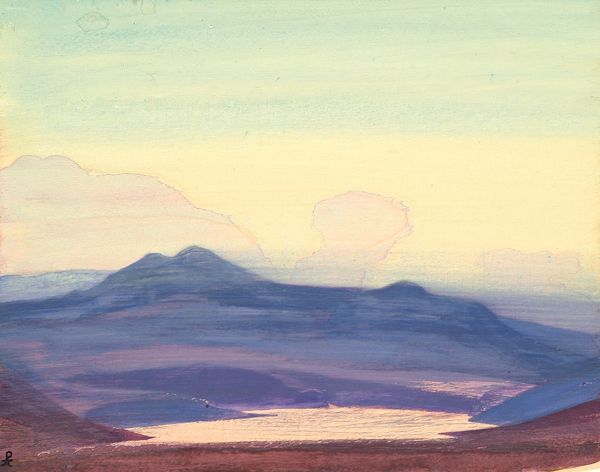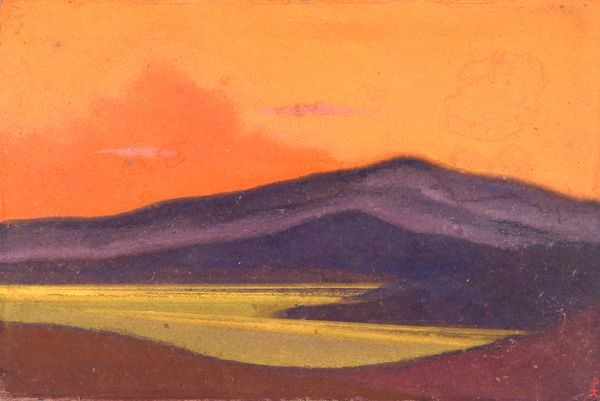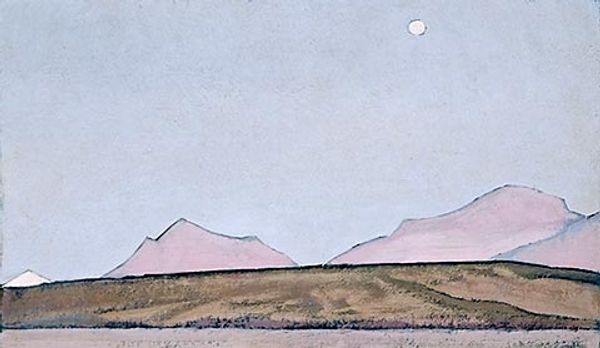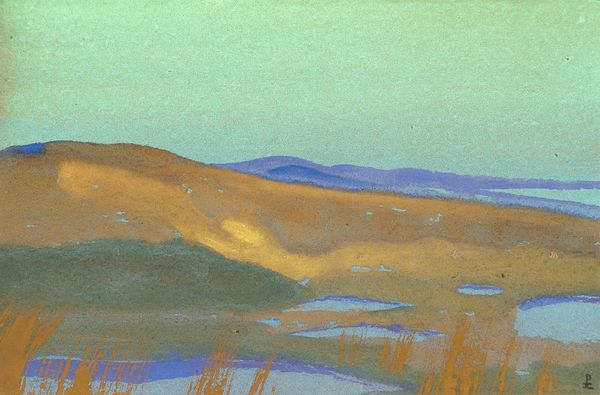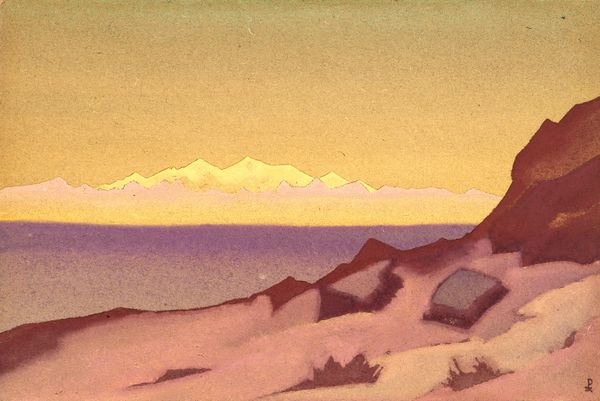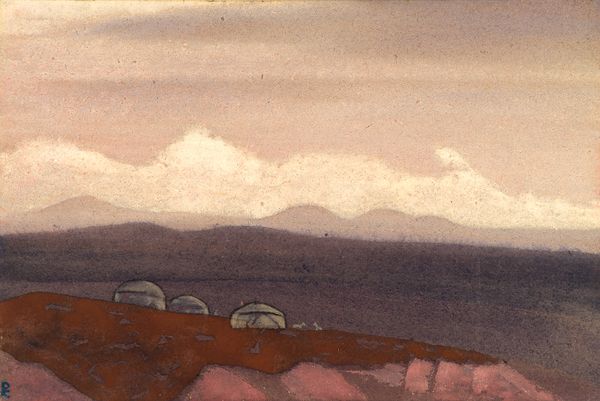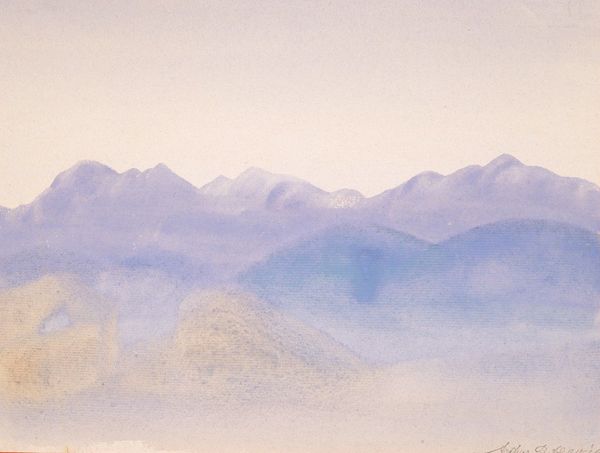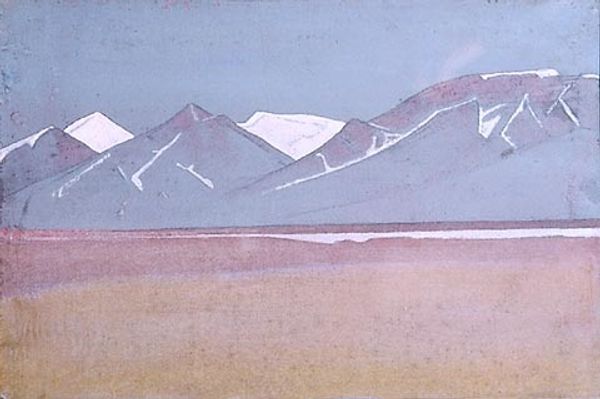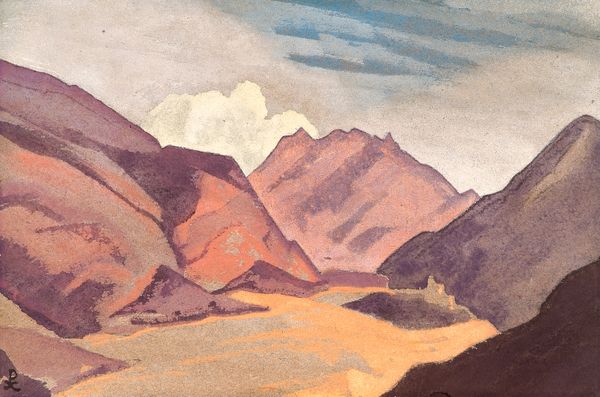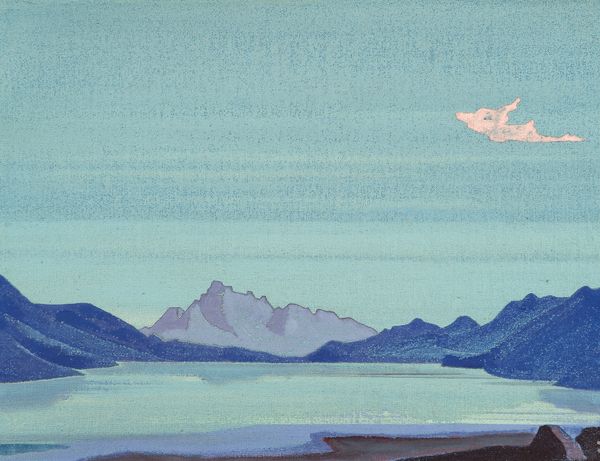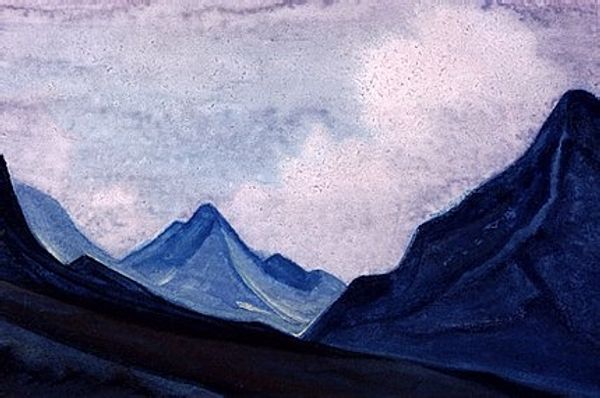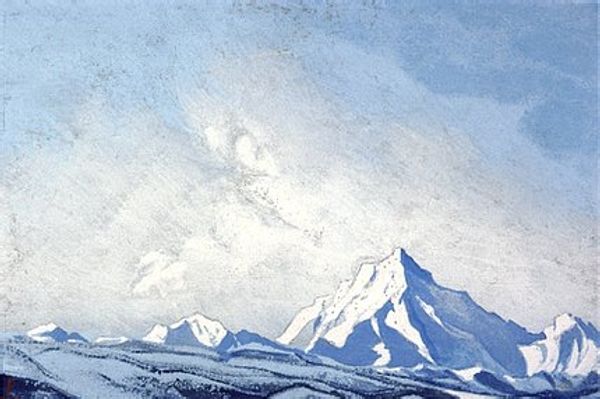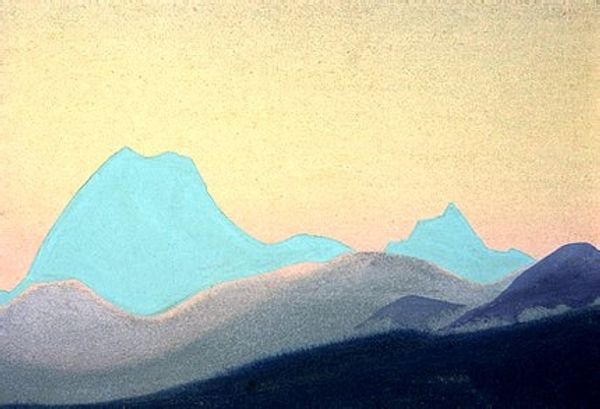
Copyright: Public domain
Editor: This is “Mongolia. Chakhar hills.”, a 1936 watercolor by Nicholas Roerich. The palette feels very muted, and yet there’s something very striking about the composition – the broad expanse of land, those cool, hazy mountains, and the cloudy sky pressing down on it all. What do you see in this piece? Curator: I'm drawn to the interplay of planes. Notice how the artist segments the composition into distinct horizontal bands: the foreground plane with its implied texture, the sharply defined mountain range in the middle ground, and then the atmospheric sky, each creating a spatial recession through variations in color and tone. The colour itself possesses structural value as the painting is heavily composed of tone which allows it to convey structure. Editor: That’s interesting. It’s almost like Roerich is dividing up the world into chunks. How do you read those divisions? Curator: One might analyze the stark division between earth and sky. Consider the materiality of the watercolour medium itself. The fluidity and translucence, which can lend an ethereal quality, are juxtaposed against the rigid lines defining the mountains. We can view these contrasting qualities of painting and plane as symbolizing something in the thematic intention. What are your views on Roerich's composition here? Editor: I hadn't really considered how the qualities of watercolour contribute. But now that you point it out, there's a clear contrast in visual intention! It brings a certain grounded and solid visuality when he wants us to feel we're looking at a mountain range, as distinct from air. Curator: Precisely! And this careful arrangement emphasizes not only what is depicted, but how it is depicted, reinforcing the intentionality embedded within the very structure of the piece. The composition invites careful examination into how it's assembled visually. Editor: Thanks, seeing how Roerich constructed this painting makes me appreciate his process, not just the final image. Curator: Indeed. By focusing on these intrinsic visual relationships, we are able to grasp how form is actively carrying a significant thematic intent.
Comments
No comments
Be the first to comment and join the conversation on the ultimate creative platform.
